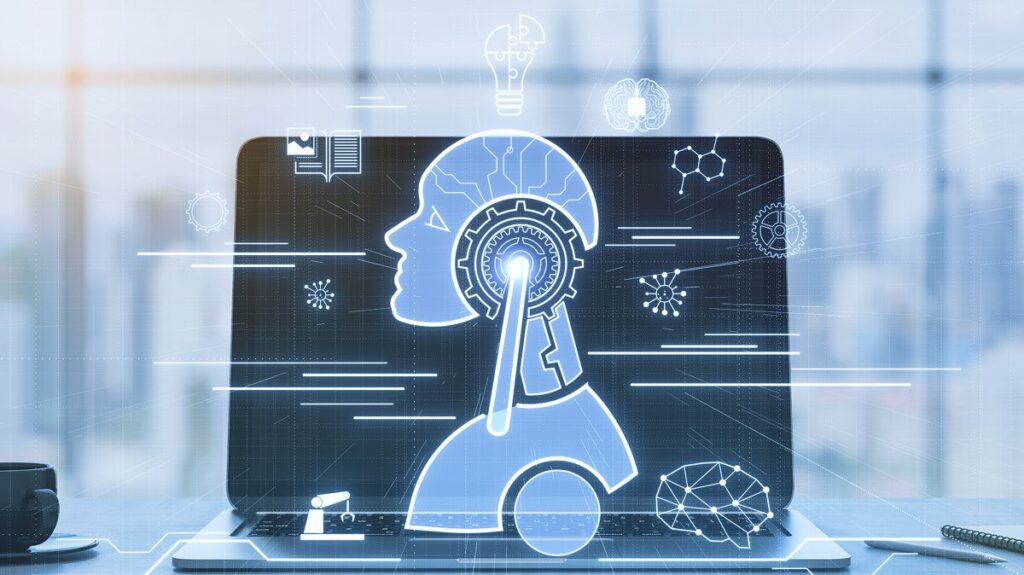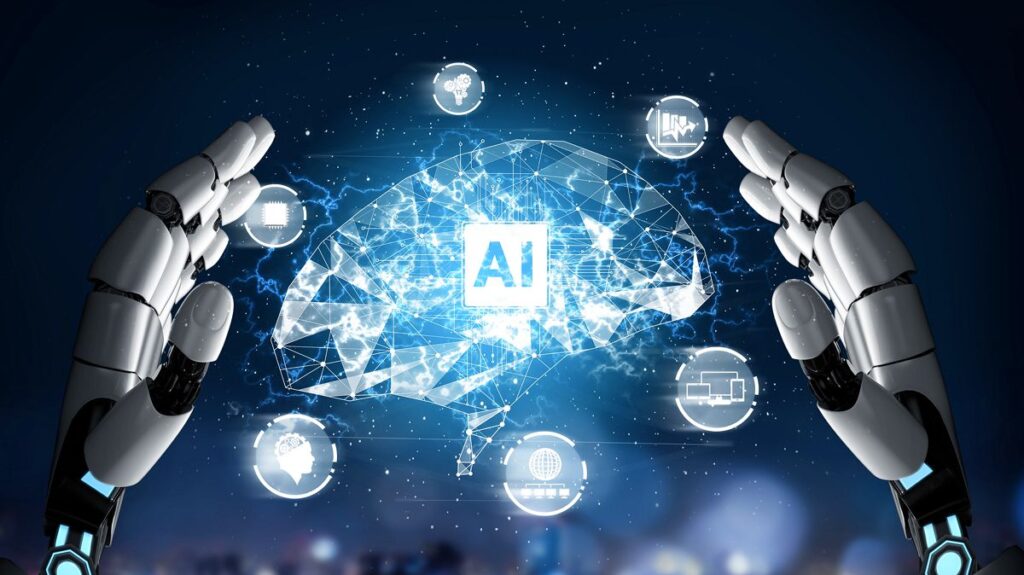Machine learning (ML) is a branch of artificial intelligence that enables computers to learn from data and make decisions without explicit programming. ML models identify patterns by analyzing large datasets and refining their accuracy. Businesses use ML to automate processes, enhance decision-making, and uncover insights from vast amounts of data.
The adoption of ML is accelerating across industries. A report from Itransition found that 97% of companies using AI and ML have seen increased productivity and reduced human error, among other benefits. Healthcare, finance, and e-commerce organizations rely on ML for predictive analytics, automation, and personalized experiences.
With so many machine learning models available, choosing the right one can be challenging. Understanding the different types of machine learning models is the first step to effectively using ML. We’ll examine how key types work.
1. Supervised machine learning
Supervised learning is a type of machine learning where models are trained using labeled data, meaning each input comes with a known output. The algorithm learns by mapping inputs to correct outputs, enabling it to make predictions for unseen data. This method is widely used for classification and regression tasks, such as predicting medical diagnoses, detecting fraudulent transactions, and forecasting stock prices. Supervised learning requires two datasets: a training set, which teaches the model patterns, and a validation set, which evaluates the model’s accuracy before deployment.

Key Algorithms:
- Linear Regression: A fundamental algorithm used for predicting continuous numerical values. Using a best-fit line establishes the linear relationship between an independent and dependent variable. Commonly applied in sales forecasting, real estate price estimation, and risk assessment.
- Logistic Regression: A statistical model for binary classification tasks, predicting categorical outcomes. It uses a logistic function to estimate probabilities and is commonly used in spam detection, credit scoring, and disease diagnosis.
- Decision Trees: A tree-structured model where each node represents a feature, each branch represents a decision, and each leaf node represents an outcome. Decision trees are easily interpretable and widely used in healthcare, finance, and retail analytics.
- Support Vector Machines (SVM): A classification algorithm that finds the optimal hyperplane to separate different classes in a dataset. SVM is particularly effective in high-dimensional spaces and is used for image classification, bioinformatics, and text categorization.
- Neural Networks: Inspired by the human brain, neural networks consist of interconnected neurons processing information. These models excel in recognizing patterns, making them essential in deep learning applications like speech recognition, autonomous driving, and medical imaging.
- Naive Bayes: A probabilistic algorithm based on Bayes’ theorem, assuming that features are independent. Despite this simplification, it performs well in text classification, sentiment analysis, and spam filtering.
- k-Nearest Neighbors (kNN): A simple, instance-based learning algorithm that classifies new data points based on the majority vote of their k nearest neighbors. Commonly applied in recommendation systems, anomaly detection, and customer segmentation.
Pros:
- High accuracy due to labeled training data.
- Interpretability in many models like decision trees and logistic regression.
- Can leverage pre-trained models to save development time.
Cons:
- Requires a large amount of labeled data, which can be expensive and time-consuming.
- Struggles with unexpected patterns that were not in the training dataset.
- This may lead to poor generalization when applied to new, unseen data.
2. Unsupervised Machine Learning
Unsupervised learning involves training models on unlabeled data, allowing them to discover patterns, relationships, or structures in datasets without predefined outputs. The goal is to group similar data points or reduce the complexity of high-dimensional data. This type of learning is commonly used in market segmentation, anomaly detection, and data exploration.

Key Algorithms:
- K-Means Clustering: A centroid-based clustering algorithm that groups data into K clusters. It iteratively refines cluster assignments, making it useful in customer segmentation, social network analysis, and image compression.
- Hierarchical Clustering: Unlike K-Means, this algorithm builds a hierarchy of nested clusters without requiring a predefined number of clusters. It is widely used in genomics, taxonomy classification, and document organization.
- Principal Component Analysis (PCA): A dimensionality reduction technique that transforms correlated variables into a smaller set of uncorrelated variables while preserving most of the dataset’s information. It is commonly used for facial recognition, bioinformatics, and financial data analysis.
- Autoencoders: A special type of neural network used for unsupervised learning, particularly in anomaly detection, image denoising, and feature extraction. Autoencoders learn efficient data representations by encoding and reconstructing input data.
Pros:
- Identifies hidden patterns and structures within data.
- Useful for customer segmentation, fraud detection, and anomaly detection.
- Reduces the effort of manual data labeling.
Cons:
- Difficult to evaluate model performance due to the lack of labeled data.
- The interpretability of clusters may not always be meaningful.
- Some techniques, like autoencoders, require significant computational resources.
3. Self-Supervised Machine Learning
Self-supervised learning (SSL) is a subset of unsupervised learning where models generate their training labels from raw data. Instead of relying on large amounts of labeled data, SSL allows models to create pseudo-labels, making it highly efficient for applications with limited labeled datasets. SSL is a core AI function used in natural language processing (NLP), computer vision, and speech recognition.
Key Algorithms:
- Contrastive Learning: A technique where models learn by distinguishing similar and dissimilar data points. Used in computer vision tasks such as image recognition.
- Masked Language Modeling (MLM): A method where parts of the input text are hidden, and the model predicts the missing words. This approach powers large language models like BERT.
- Generative Pretraining (GPT): Trains models on large-scale text data, allowing them to generate coherent text based on context.

Pros:
- Reduces the need for manually labeled datasets.
- Can generalize well across various domains.
- Scales efficiently for large datasets in NLP and computer vision.
Cons:
- Requires extensive computational power.
- The quality of generated labels can affect performance.
- Designing practical pretext tasks can be challenging.
4. Reinforcement Learning
Reinforcement learning (RL) is an interactive learning process where an agent makes decisions in an environment to maximize cumulative rewards. The agent learns through trial and error, receiving rewards for good actions and penalties for undesirable ones. RL is widely used in robotics, self-driving cars, and game AI.
Key Algorithms:
- Q-Learning: A value-based algorithm that learns optimal action policies by maximizing rewards. Used in game AI and robotic control.
- Deep Q-Networks (DQN): Enhances Q-learning by incorporating deep learning, making it suitable for complex decision-making tasks.
- Policy Gradient Methods: Optimize decision-making by directly adjusting policy parameters widely used in robotics and autonomous systems.

Pros:
- Effective in solving sequential decision-making problems.
- Used for tasks requiring real-time adaptability, such as robotics.
- Capable of optimizing long-term strategies.
Cons:
- Computationally expensive and time-consuming.
- Requires vast amounts of data for training.
- Not suitable for simple problems where other ML methods may be more efficient.
5. Semi-Supervised Machine Learning
Semi-supervised learning combines elements of supervised and unsupervised learning. To improve performance, models train on a small labele data set using a larger pool of unlabeled data. This technique is useful when labeled data is limited but unlabeled data is abundant.
Key Algorithms:
- Generative Adversarial Networks (GANs): Uses two competing neural networks (generator and discriminator) to create high-quality synthetic data.
- Random Forest: An ensemble learning method that enhances decision trees by reducing overfitting.
- Gradient Boosting (e.g., XGBoost, LightGBM): Boosts weak learners to improve model accuracy and is widely used in predictive modeling competitions.
- Bagging Models (e.g., Bagged Trees): Combines multiple models to improve stability and accuracy.
Pros:
- Requires fewer labeled examples, reducing annotation costs.
- Improves model generalization with limited labeled data.
- Widely applicable in healthcare, fraud detection, and finance.
Cons:
- More complex to implement compared to purely supervised learning.
- Relies on labeled data availability.
- Unlabeled data can introduce noise and impact model performance.
How to Choose the Right Machine Learning Models?
There is no definitive answer, as the best choice depends on multiple factors. The decision varies based on the problem, the desired output, the nature and volume of data, computational constraints, and the number of features and observations. Below are key factors to consider when selecting an algorithm.
1. Data Amount and Quality
Larger datasets improve model accuracy and generalization by reducing bias and variance. Linear regression, Naïve Bayes, and linear SVM prevent overfitting when data is limited or has more features than observations. For large datasets with more observations than features, kNN, Decision Trees, and Kernel SVM can capture complex patterns but require more data to avoid overfitting.
Poor-quality data can lead to unreliable predictions and increased error rates. Preprocessing techniques, such as feature selection, handling missing values, and data augmentation, help improve model performance. Choosing the right model depends on balancing data availability, quality, and computational efficiency.
2. Accuracy vs. Interpretability
Some models prioritize interpretability over accuracy, making them easier to understand. Linear and Logistic Regression provides clear insights into variable relationships, making them ideal for applications where explainability is essential. Flexible models like Neural Networks and Decision Trees achieve higher accuracy but sacrifice interpretability, making them better suited for tasks requiring precise predictions.
Increasing model complexity improves predictive power but makes understanding the decision process harder. Business and regulatory environments often require interpretable models, especially in finance and healthcare. Applications like fraud detection or recommendation systems benefit more from highly accurate but complex models.
3. Training Speed and Efficiency
Faster models like Naïve Bayes, Linear Regression, and Logistic Regression are easy to implement and train quickly. These models work well for tasks that require real-time predictions or when computational resources are limited. More complex models like SVM, Neural Networks, and Random Forests require longer training times but deliver higher accuracy.

Deep learning models demand significant processing power and may take hours or days to train on large datasets. Balancing accuracy and efficiency is critical in real-world applications, especially when working with time-sensitive data. When selecting a model, the trade-off between speed and accuracy must align with project constraints.
4. Data Linearity and Complexity
Some models assume that data follows a linear pattern, making them well-suited for simple relationships. Logistic Regression and Linear SVM perform well when a straight line can separate data trends. If data is non-linear, these models struggle to capture patterns, leading to poor predictions.

When data is complex, Kernel SVM, Random Forests, and Neural Networks effectively handle high-dimensional structures. Identifying data linearity using residual error analysis helps choose the right model. Non-linear models require more computational power but excel in image recognition and speech processing tasks.
5. Number of Features and Dimensionality
Datasets with many features can slow down training and reduce model performance. When the number of features is high compared to observations, SVM and Neural Networks perform well but require dimensionality reduction techniques like PCA. High-dimensional data is shared during genetics research, text analysis, and image processing.

Feature selection methods help improve model efficiency by retaining only the most relevant attributes. Reducing dimensionality minimizes overfitting and improves interpretability, especially for complex datasets. Choosing the right model depends on balancing feature complexity, computational resources, and predictive accuracy.
At KMS Healthcare, we specialize in leveraging AI and machine learning to transform healthcare data into actionable insights. Our expertise includes developing custom AI algorithms, integrating machine learning models, and implementing healthcare data analytics solutions to enhance patient care and operational efficiency.
Simplify Machine Learning Implementation with KMS Healthcare
Implementing machine learning in healthcare requires synergistic AI development, rigid compliance, and seamless system integration expertise. Choosing the right machine learning models is essential to optimizing performance, ensuring accuracy, and addressing your healthcare challenges. KMS Healthcare delivers tailored AI solutions to help healthcare organizations maximize the value of their data.

- Custom AI Development: Design and deploy AI algorithms that enhance predictive analytics, automate workflows, and improve patient care.
- AI-Powered Diagnostics: Leverage machine learning for early disease detection, accurate diagnoses, and data-driven clinical decisions.
- Seamless ML Integration: Embed AI models into existing EHR systems, patient engagement platforms, and operational processes for optimized performance.
Looking to accelerate AI adoption in healthcare? Partner with KMS Healthcare to drive innovation and improve patient outcomes.
